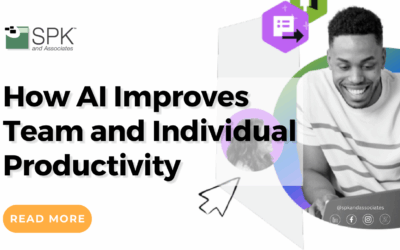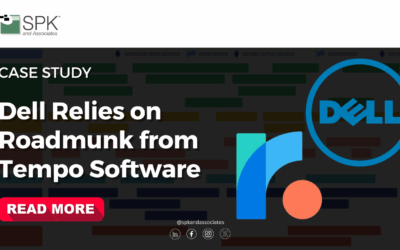“Data engineering is the unsung hero of data science, the foundation upon which great data analysis is built.”
Everyone in the computer science field is familiar with the phrase, “garbage in, garbage out.” This phrase encapsulates the importance of what goes on behind the scenes. There is no analysis, data science, BI, business insights, or even effective AI without data engineering. Data engineers manage the production of meaningful, clean data for the teams that produce important business insights. They typically don’t get the credit they deserve since their work is foundational and therefore less visible, but it is critically important.
The Growth of Data Engineering
Ten or twenty years ago, data engineering was a somewhat limited discipline. It was confined to large enterprises and involved creating data warehouses that ingested data pipelines from multiple enterprise apps and databases. This data, which was primarily structured data, had to be transformed and reorganized into a unified repository. The extraction, transformation, and loading (ETL) were often tricky and time-consuming. This was the only process that made data available for analysis. In addition to this, a large amount of computing power and storage capacity had to be purchased and maintained on-premises.
Today, data engineering is more widely available with the advent of cloud computing, machine learning, and AI. It is available to smaller companies because of access to affordable computing and storage resources through cloud services. Data engineering involves building systems that can collect, organize, and deliver data from various sources to end users. These users will then analyze and provide actionable insights.
A Key Benefit
Data engineering starts with the data sources. Multiple applications in a company collect data, whether small or large. Even mid-size companies can contain up to 20 or 30 applications in the various departments collecting valuable data. Each application’s data is housed in its own database. Each application then provides insightful reporting that gives the company users insight into the activities or workflows supported by that application.
These insights are great, but what happens when you want to relate the data from one application to another? Furthermore, what happens when you want insights gained from relating the data housed by your CRM app to the data in your ERP or manufacturing app?
The solution to these problems is data engineering. Data pipelines are set up to extract data from each siloed database into a data lake or data warehouse. Data lakes contain unstructured data while data warehouses contain structured data. Once the data is siloed, data analysis can begin. Data lakes or warehouses commonly live in the cloud. Both AWS and Azure have extensive cloud services that make data engineering easy.
Technological Advancements
As with many other business processes, technology’s rapid evolution is changing the data engineering discipline. In response, data engineers continuously learn new skills and technologies to keep up. Understanding ETL and writing SQL queries, which might have been sufficient before, are only basic foundational skills today.
AI and Machine Learning
Naturally, we have to start with the impact AI is having on data engineering. AI technologies are enhancing the identification and retrieval of more data through automation. In addition to this, machine learning is streamlining the data search process. This results in enabling access to larger, more relevant data sets. AI can also help quickly unify disparate datasets, making the data available for analysis faster. Understanding these technologies and the related tools is vital for today’s data engineer.
Real-time Data Processing
Real-time data processing is critical for a number of business applications, and the business need continues to rise. Current real-time applications include but are not limited to:
Fraud detection for financial services
Predictive maintenance for manufacturing
Traffic management for smart cities
Health monitoring and telemedicine
Supply chain optimization
Many technologies are supporting real-time processing and the amount is growing every day. Three commonly used technologies are Apache Kafka, Apache Storm, and Apache Flink. Additionally, Druid, Estuary, and Rockset address different aspects of this discipline.
Cloud-based Data Engineering
For any company in the mid-market or smaller, data engineering is being conducted within one or more public cloud providers. These providers are AWS, Azure, or Google Cloud. While enterprise companies can afford the required applications and infrastructure on-prem, this is out of reach for smaller companies. Indeed, the exploding data engineering services offerings on the cloud make it very difficult to choose anything else!
Scalability – scale infrastructure and data services up or down, at will
Cost efficiency – pay only for the resources you need
Technological flexibility – have immediate access to new tech, without having to switch out applications or infrastructure
Global access – use and reach your data from anywhere
Security and compliance – cloud service providers invest heavily in security and compliance requirements, which customers enjoy
Integration with AI and machine learning – AI and ML applications are available first via the cloud, and immediately accessible
Business continuity – the ability to create a disaster recovery environment for your data services.
FinOps is an operational framework and cultural practice which maximizes the business value of cloud, enables timely data-driven decision making, and creates financial accountability through collaboration between engineering, finance, and business teams.
As cloud computing becomes increasingly important, cloud spend becomes increasingly scrutinized. According to the FinOps Foundation, there are 3 key steps to implementing a FinOps practice:
1
Understand cloud usage and cost
2
Quantify its business value
3
Optimize cloud usage and cost
Data engineering is an integral part of all three of these steps.
At first glance, data engineering for FinOps is primarily focused on cost containment and getting appropriate business value for cloud spend. However, there is gold in this data as well. Data engineers should always search for ways to generate revenue from this data for their companies.
How is the Data Engineer Role Evolving?
An important change and trend is occurring among all technology disciplines. It used to be sufficient to have a deep technical expertise. Technical folks were asked to solve technical problems. The data engineer was asked to create a data pipeline from a few sources and focus on creating a data warehouse acceptable for analysis and insight.
However, it is becoming increasingly clear that valuable engineers are developing business and domain knowledge. Every technical request starts with a business need or problem. Understanding the business need allows one to more efficiently and effectively construct the technical task and execute it.
Let’s say for example I am an Atlassian Jira administrator and my R&D department asks for a configuration change in their Jira project or board. I would need to be the bridge between the business request and the technology in addition to executing the technical change. I must understand the process need that drove the configuration change request so that I can suggest a better way to do it. The engineer is in the unique position of understanding what the technology can do. If they also understand the business need to a degree, their value jumps ten-fold.
The same reasoning applies to a data engineer. This engineer understands the technology of data pipelines, data storage, ETL, and so on. Their ability to also understand the business requirements, insights that might be valuable, and the business issues will enable them to possibly shift the technical ask to something of greater value. In this way, the evolving data engineer becomes more efficient and effective at their job.
Often, the analyst or business requestor might even hide the business need from the engineer. They might imagine it muddies the waters to get into that side of the task. Nothing could be farther from the truth. Empower your data engineering team by providing as much business information as you can, within the time allowed. Let them create a more inventive technology solution to provide the best outcome, by really understanding what you need.
Improving Data Engineering Implementation
It is likely your business already implements some form of data engineering due to its importance in the modern era. However, now that we have covered the technological advancements, evolution, and benefits of data engineering, you may want to improve your business’s implementation of it. Along with common ways to grow your team’s skills such as extra studying or training, our experts can help provide new ways of improving your data engineering implementation. If you have more questions about data engineering, contact our team of experts today.












